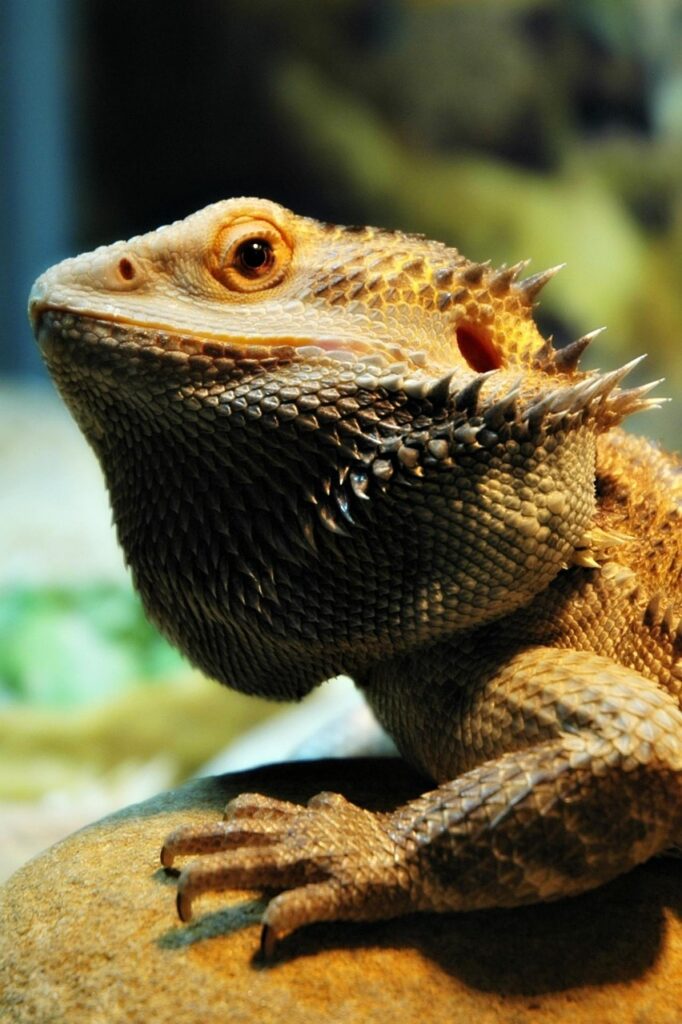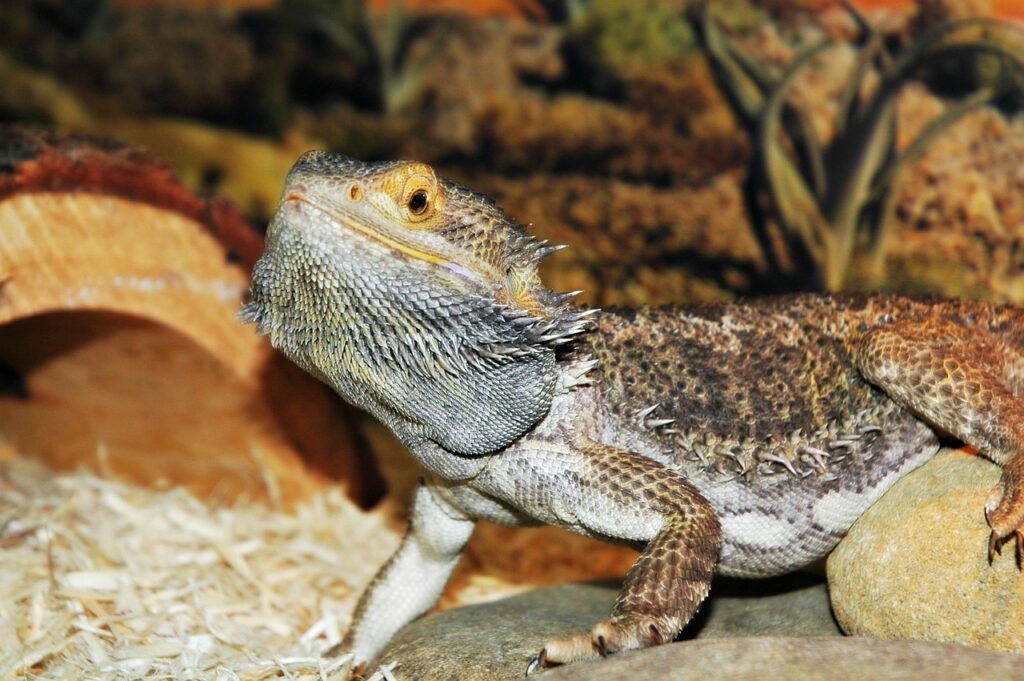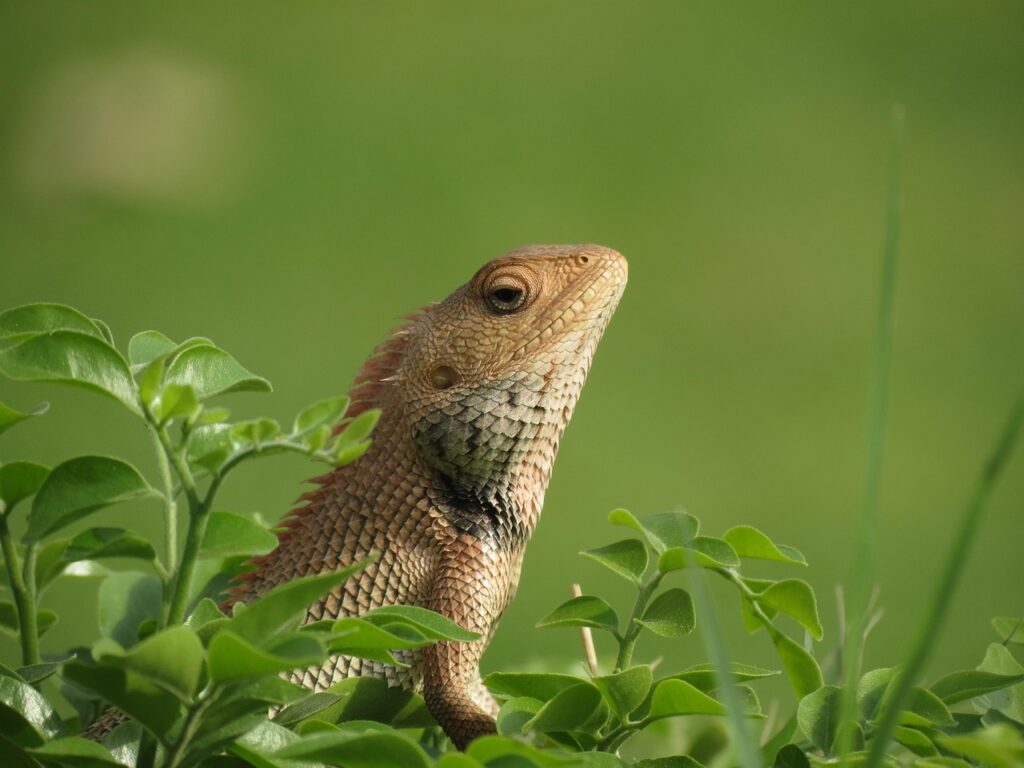Many bearded dragon owners notice their pets twitching and wonder what might be causing this behavior. Twitching in a bearded dragon can often be linked to calcium or vitamin D deficiency. Without enough of these nutrients, their muscles and nerves can’t function properly.

Stress is another factor that could cause twitching. Changes in their environment, new routines, or even new pets can stress them out. This stress can make them twitch or show other unusual behaviors.
It’s crucial to observe other symptoms your bearded dragon might have and consult a veterinarian if the twitching persists. A vet can provide the right diagnosis and treatment to keep your pet healthy.
Understanding Bearded Dragon Behavior

Bearded dragons display a variety of behaviors. Recognizing what is normal and what could indicate stress or health issues is vital for their care.
Normal vs. Abnormal Behaviors
Bearded dragons exhibit several typical behaviors. They may wave their arms to show submission or bob their heads to assert dominance. During shedding, they might rub against objects to remove old skin. It’s normal for them to bask under heat lamps to regulate body temperature.
Abnormal behaviors can signal issues. If your dragon twitches, it could be due to calcium deficiency or other health problems. Continuous glass surfing, where they repeatedly try to climb the walls of their enclosure, might indicate stress or boredom. Any sign of lethargy, prolonged hiding, or aggression beyond usual interactions should be monitored and addressed.
Stress and Anxiety Indicators
Bearded dragons can experience stress and anxiety from changes in their environment or inadequate care. Stress can cause loss of appetite, frequent hiding, or dark stress marks on their bodies. Bright, clean environments that resemble their natural habitat can help minimize stress.
Signs of anxiety include sudden aggression or panic behaviors, such as running around frantically. Introducing new items or pets into their space too quickly can cause anxiety. Ensuring a consistent routine and gentle handling can reduce anxiety levels in bearded dragons.
Hunting and Feeding Behavior
Bearded dragons are natural hunters and show specific behaviors during feeding. They stalk insects with keen eyes, moving slowly before striking quickly. Live prey stimulates their hunting instincts, which is crucial for their mental and physical health.
Loss of appetite can be a concern and might indicate illness or environmental issues. Feeding a balanced diet of live insects, vegetables, and occasional fruits can maintain their health. Observe feeding behavior regularly to ensure they are eating well and staying active. If abnormalities persist, consulting a vet is advisable.
Health Concerns for Twitching Bearded Dragons

When a bearded dragon starts twitching, it can be a sign of an underlying health issue. This section covers the most critical concerns, including metabolic bone disease, nutritional deficits, neurological disorders, and common illnesses and parasites.
Metabolic Bone Disease
Metabolic Bone Disease (MBD) often causes twitching in bearded dragons. MBD results from a calcium deficiency and an imbalance of calcium and phosphorus. Symptoms include muscle tremors, weak bones, and lethargy. Treatment involves calcium supplements and ensuring proper UVB lighting, as UVB helps in synthesizing Vitamin D3, which is crucial for calcium absorption.
Regular veterinary checks are essential to monitor progress. Correcting diet and environment can often lead to recovery.
Nutritional Deficiencies
Nutritional deficiencies are another reason for twitching. A diet lacking in calcium or Vitamin D3 can cause muscle spasms and other symptoms. It’s vital to provide a balanced diet rich in these nutrients.
Include calcium-rich foods and supplements. Also, make sure your dragon gets adequate UVB exposure to facilitate proper vitamin absorption. A varied diet helps prevent these deficiencies.
Neurological Disorders
Neurological disorders can result in twitching and seizures. Causes can range from traumatic injuries to congenital issues. Symptoms like uncontrolled muscle movements, tremors, and lack of coordination should be addressed by a vet.
Diagnosis often involves blood tests and imaging studies. Treatment options depend on the disorder but might include medication and supportive care. Early intervention can greatly improve prognosis.
Common Illnesses and Parasites
Common illnesses such as respiratory infections and parasites like mites, pinworms, and coccidia can cause twitching. Respiratory infections can lead to muscle spasms due to overall weakness. Parasites can cause discomfort and neurological symptoms.
Regular fecal tests help detect parasites early. Treatment involves medication to eliminate parasites and antibiotics for infections. Proper hygiene and diet are crucial in prevention. Regular vet visits ensure health issues are caught early.
Dietary and Environmental Care
Ensuring a bearded dragon’s health involves maintaining a suitable environment and providing a balanced diet. Attention to enclosure setup, UVB lighting, and dietary needs can address and prevent twitching issues.
Proper Enclosure Setup
A bearded dragon’s enclosure greatly impacts its health. A tank size of at least 40 gallons is recommended for adults, allowing room to move. They need a basking spot with a temperature of 95–110°F, while the cooler side should be 75–85°F.
Humidity levels should be kept low, ideally between 30-40%. Using a hygrometer helps monitor this. Substrates like reptile carpet or tiles are safe and easy to clean, avoiding dangerous options like loose sand that can cause impaction. Regular cleaning ensures a healthy environment.
Importance of UVB Lighting
UVB lighting is crucial for bearded dragons. It helps them produce Vitamin D3, which is vital for calcium absorption. Without adequate UVB, they can suffer from metabolic bone disease, leading to twitching and other severe health issues.
UVB bulbs should cover 50-70% of the tank and be replaced every six months. Combining UVB light with heat within the enclosure ensures proper metabolism. Position the UVB light about 10-12 inches from the basking spot for optimal exposure.
Balanced Diet Essentials
A balanced diet for a bearded dragon includes a mix of vegetables, insects, and occasional fruits. Leafy greens like collard greens, dandelion greens, and mustard greens are ideal. Avoid lettuce and spinach as they offer little nutritional value.
Insects such as crickets, mealworms, and dubia roaches provide essential protein. Dust insects with calcium powder a few times a week to prevent deficiencies. Fruits like berries and mangoes can be given sparingly as treats. Maintaining a varied diet ensures proper nutrition and prevents twitching related to dietary imbalances.
When to Seek Veterinary Care
It is important to recognize when your bearded dragon needs medical attention to ensure proper treatment and recovery. Knowing the signs of serious illness and how a vet can help is crucial.
Signs of Serious Illness
Bearded dragons can show various symptoms indicating they are unwell. Lethargy is a common sign that they might be sick. If your bearded dragon is unusually inactive or slow, this might be a cause for concern.
Loss of appetite is another major sign. If it stops eating or suddenly changes its eating habits, this can indicate an issue. Diarrhea or constipation can also signal a problem. Watch for changes in their normal digestion and waste.
Dehydration is a critical condition. Dry or wrinkled skin, sunken eyes, or increased time spent under the heat lamp can be signs. If you notice any of these symptoms, it may be time to seek veterinary care.
Diagnosis and Treatment
When you observe signs of illness, a veterinarian can offer a diagnosis. They might use x-rays to check for internal problems or run other tests like blood work. These tests can help identify any underlying medical conditions.
The vet may suggest specific treatments, such as medication or re-hydration techniques. For example, they might give fluids to address dehydration or prescribe antibiotics for infections. Following the vet’s advice closely helps with recovery.
Prompt medical care can make a significant difference in your bearded dragon’s health. Ensuring they receive the right treatment is essential for their well-being.
